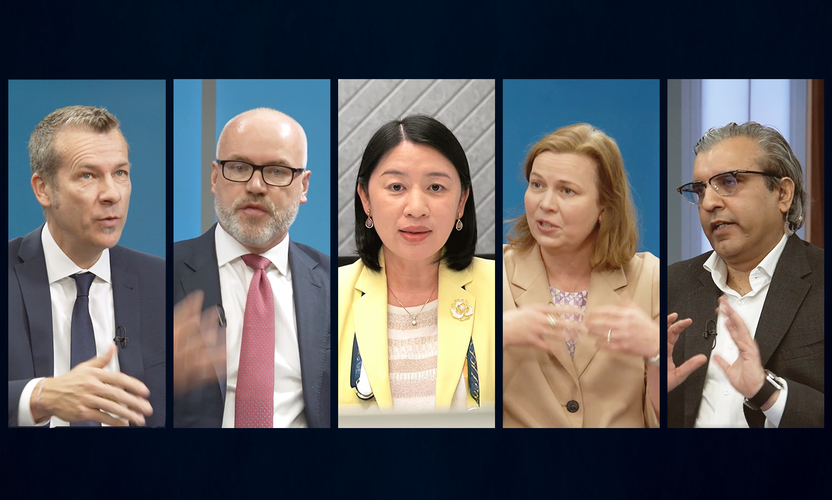Resilience
The FLI may not yet reflect the full extent of the latest escalation in the US-China trade war. But that said, several rounds of escalation do not seem to have derailed the positive drivers that have taken the FLI into accelerating territory. The current upbeat reading suggests a ‘buffer’ of resilience in the global system that should help it withstand further tariff increases. Part of the reason behind the resilient global outlook is the stimulus provided by the dramatic plunge in developed market sovereign bond yields since 2018, approaching or exceeding in many cases the 2007-09 peak-to-trough declines. This has been accompanied by more supportive policy in China, and other key emerging markets.
Source: Fidelity International, September 2019
Continued recovery
More than three-quarters of FLI’s underlying components are accelerating, a dramatic reversal from the early 2019.
In terms of the FLI ‘sectors’, Business Surveys and Industrial Orders continue to improve, with hard data on Germany’s new foreign orders continuing to rebound and Japan’s inventory/sales ratio also improving. However, hard data on US industrial orders are lagging behind.
Consumer/Labour indicators saw growth improve, although underlying components are very mixed. US components suggest that its tight labour market is becoming a binding constraint, with hours worked and jobless claims data both pointing to sub-trend but stabilising growth.
Global Trade is unsurprisingly the laggard as both soft and hard data deteriorated. This sector has displayed pronounced mini-cycles around a flat trend in recent quarters, due to pre-stocking followed by demand destruction after successive trade war escalations. However, we are now on a downswing of one of these cycles.
Commodities remains the most supportive sector with both hard and soft data improving. However, this is possibly flattered by a resurgent Baltic Dry Index, which may reflect regulatory constraints to supply in the near-term rather than surging demand for global shipping.
Positive drivers
Global monetary conditions have eased since last year, leading to plunging developed market bond yields and creating a potent economic stimulus. The Fed has ended quantitative tightening and is cutting rates, while the European Central Bank (ECB) is on the cusp of a renewed ‘bazooka’.
Almost every major emerging market central bank is finally able to lower rates, many after painful tightening last year. Chinese policy has been measured but undoubtedly an incremental positive this year, in both fiscal and credit spheres; deleveraging is on hold, with another reserve requirement ratio (RRR) cut announced in September.
However, risks are abundant with the US-China trade war at the forefront. But the global economy appears to have the resiliency and tools to weather upcoming tariff hikes.
Moreover, the fast-fading boost from prior years’ US fiscal policy, against a mature credit cycle and tight labour market, suggests that the US will continue to slow from its previously strong levels - even as the rest of the world picks up.







































